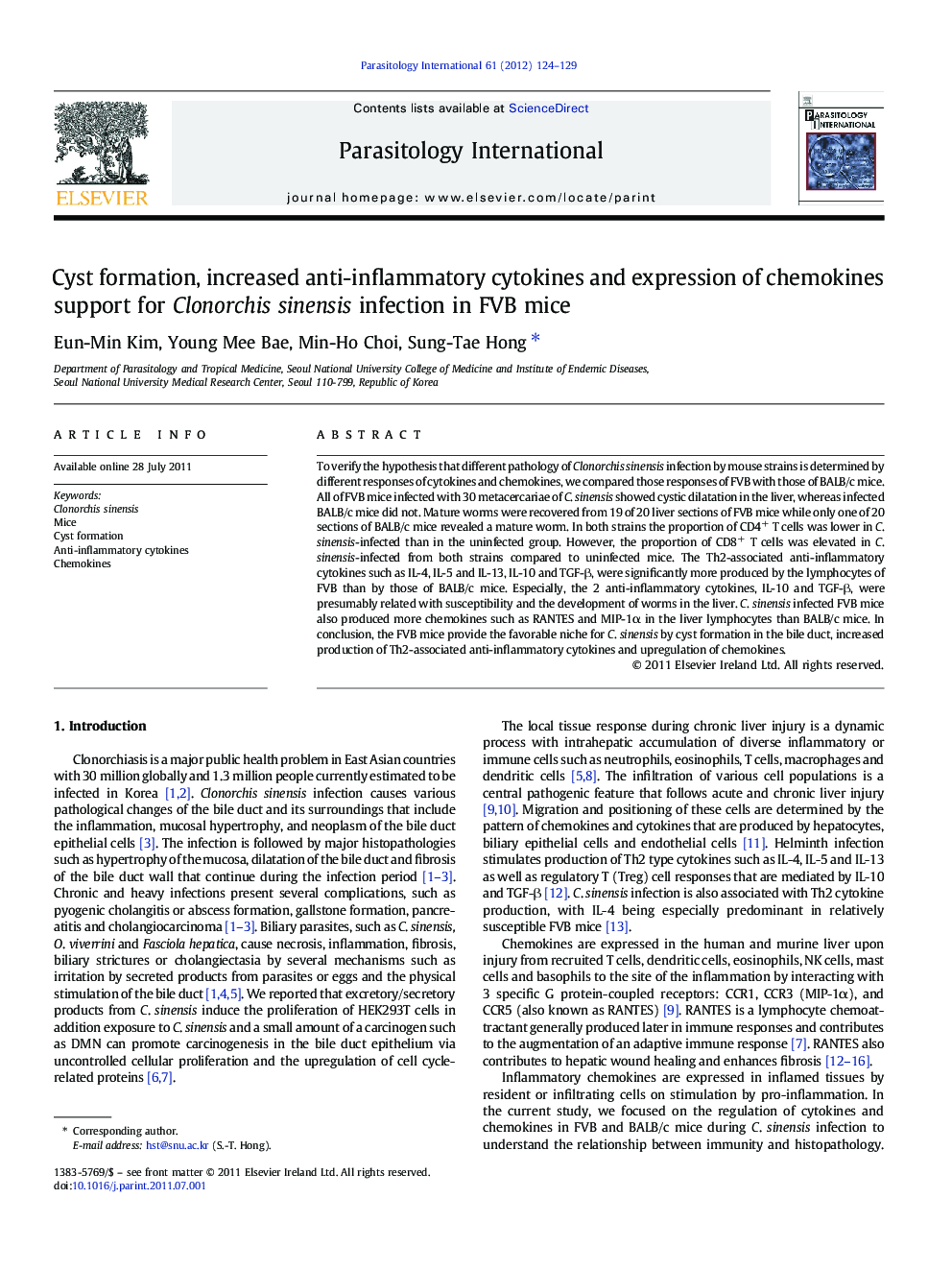| کد مقاله | کد نشریه | سال انتشار | مقاله انگلیسی | نسخه تمام متن |
|---|---|---|---|---|
| 3417928 | 1225484 | 2012 | 6 صفحه PDF | دانلود رایگان |

To verify the hypothesis that different pathology of Clonorchis sinensis infection by mouse strains is determined by different responses of cytokines and chemokines, we compared those responses of FVB with those of BALB/c mice. All of FVB mice infected with 30 metacercariae of C. sinensis showed cystic dilatation in the liver, whereas infected BALB/c mice did not. Mature worms were recovered from 19 of 20 liver sections of FVB mice while only one of 20 sections of BALB/c mice revealed a mature worm. In both strains the proportion of CD4+ T cells was lower in C. sinensis-infected than in the uninfected group. However, the proportion of CD8+ T cells was elevated in C. sinensis-infected from both strains compared to uninfected mice. The Th2-associated anti-inflammatory cytokines such as IL-4, IL-5 and IL-13, IL-10 and TGF-β, were significantly more produced by the lymphocytes of FVB than by those of BALB/c mice. Especially, the 2 anti-inflammatory cytokines, IL-10 and TGF-β, were presumably related with susceptibility and the development of worms in the liver. C. sinensis infected FVB mice also produced more chemokines such as RANTES and MIP-1α in the liver lymphocytes than BALB/c mice. In conclusion, the FVB mice provide the favorable niche for C. sinensis by cyst formation in the bile duct, increased production of Th2-associated anti-inflammatory cytokines and upregulation of chemokines.
Figure optionsDownload as PowerPoint slideHighlights
► FVB mice infected with C. sinensis showed characteristic cyst formations in the liver, whereas BALB/c mice did not.
► Anti-inflammatory cytokines and chemokines produced in FVB mice may play a role in inflamed cyst formation by C. sinensis.
► IL-10 and TGF-β, were presumably related with susceptibility and the development of worms in the liver.
► These reactions make FVB mice susceptible to C. sinensis infection.
Journal: Parasitology International - Volume 61, Issue 1, March 2012, Pages 124–129